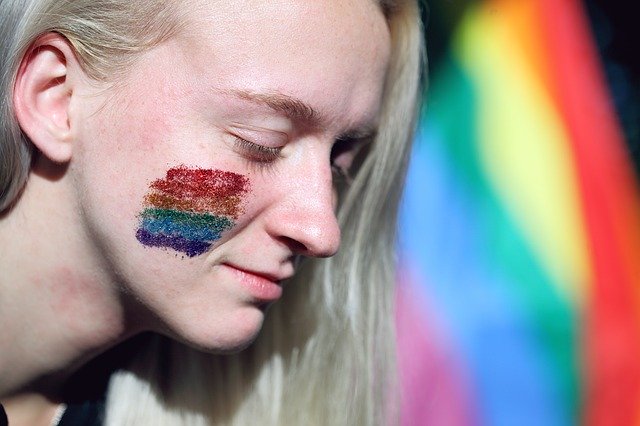Did you think that rainbow flags were the only LGBT+ flags you could wave?
In reality, there are many specific LGBT+ identities that deserve to be acknowledged. That’s why numerous LGBT+ flags have been designed over decades, lending specific visibility to particular gender and sexual identities.
So if you feel like flying your flag, you should know what colors you can flaunt.
Keep reading to understand what different LGBT+ flags mean. While we won’t cover all of them, it will at least illuminate the diversity of the community.
LGBT+ Flag
This rainbow-schemed emblem was designed by Gilbert Baker in 1979. It represents gay men and the general LGBT+ community.
The LGBT+ rainbow flag is well-circulated, making it well-known to those in and out of the LGBT+ community. Its continual circulation gives the community continuous visibility and acknowledgment.
Specific subsets of the LGBT+ community enjoy using specific LGBT+ pride flags. But the rainbow flag still tends to function well to signal their inclusion in the general LGBT+ community.
Red: Life
Orange: Healing
Yellow: Sunlight
Green: Nature
Blue: Harmony
Violet: Spirit
Lesbian Flag
The lesbian pride flag was designed by Natalie McCray in 2010. When accompanied by a lipstick mark in one corner, it’s known as the “Lipstick Lesbian” flag. “Lipstick lesbians” are lesbians that express themselves with a conventionally “feminine” image.
The red, orange, and white colors are meant to represent traditionally feminine colors.
Bisexual Flag
Michael Page designed this tricolored flag in 1998. Through purple, pink, and blue, this flag uniquely represents the bisexual community.
Pink: Attraction to those of the same gender identity
Purple: Attraction to two genders
Blue: Attraction to those that identify outside of binary gender identities
Transgender Flag
American trans woman Monica Helms designed this flag in 1999, grouping light blue, pink, and white for an inclusive trans symbol. The light blue represents the traditional colors for boys and the pink for girls.
Light Blue: Traditional colors for boys
Pink: Traditional color for girls
White: Those who are nonbinary, intersex, or transitioning.
All this creates a flag that represents both binary and nonbinary members of the trans community.
Asexual Flag
With black, grey, white, and purple, this flag represents the asexual community and was designed by AVEN (Asexual Visibility and Education Network) user “standup” in 2010.
Black: Asexuality
Grey: Grey/demi- sexual people
White: Allies
Purple: Community
Aromantic Flag
A flag portraying displaying green, white, grey, and black, this aromantic pride flag was designed by Tumblr user @cameronwhimsy in 2014.
Dark Green: Aromanticism
Light Green: Aromantic spectrum
White: Platonic/aesthetic attraction
Grey: Grey/demi-romantic people
Black: Sexuality spectrum
Nonbinary Flag
Kyle Rowan designed this flag in 2014 for those whose gender identities do not conform to binary male or female identities.
Yellow: Nonbinary gender identities
White: Multiple gender identities
Purple: Gender identities along the spectrum between male and female, a mix of the two
Black: Agendered identities
Know the LGBT+ Flag You’re Waving!
Understanding the meaning of every LGBTQ+ flag can be overwhelming, but doing proper research into iconic LGBT+ symbolism will help LGBT+ people and their allies.
If you feel like waving a flag to show your identification and/or support, then come back to this article! Know exactly what the flag you’re waving is acknowledging.
This guide represents just a few LGBT+ flags out of many. If you’d like more important, sociocultural information like this, check out the rest of our site! There’s so much more to learn.




